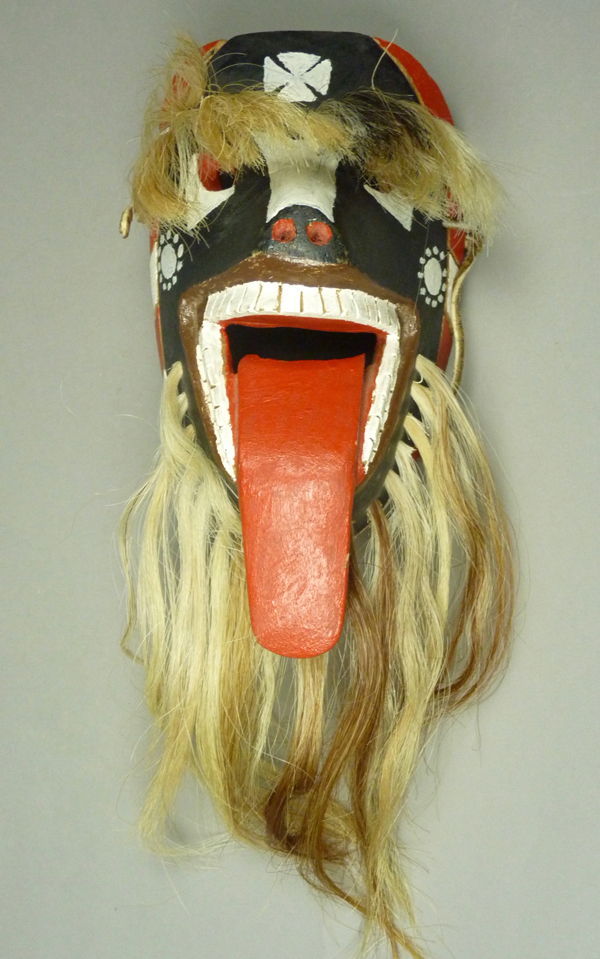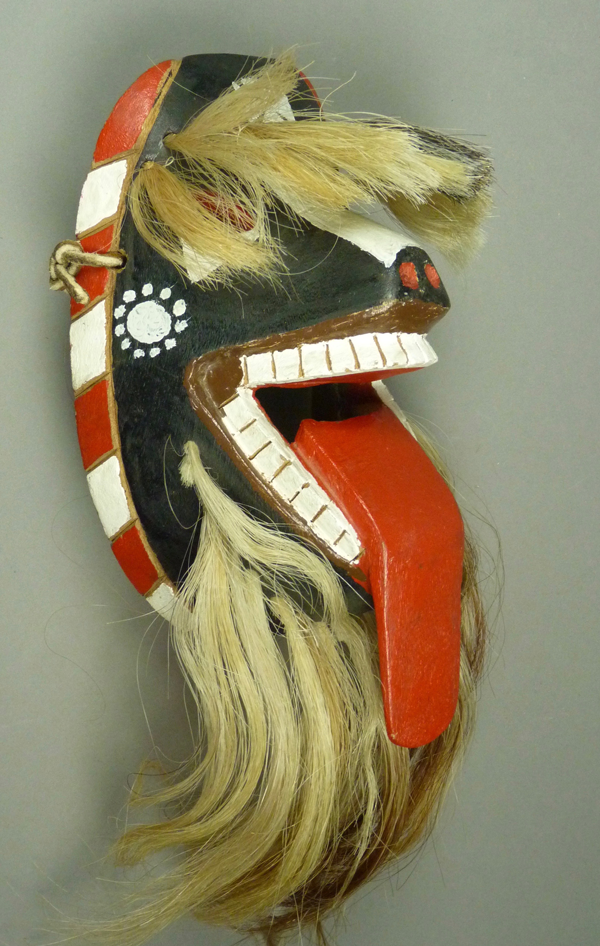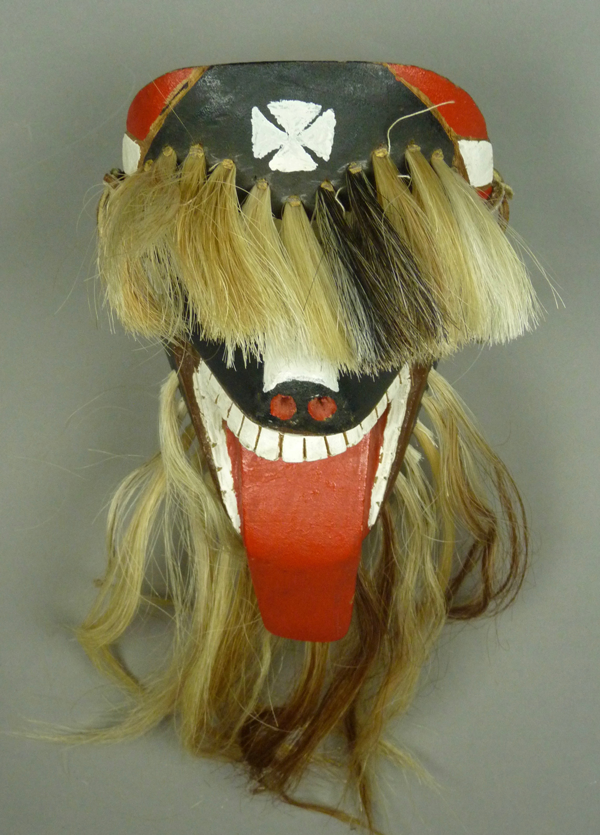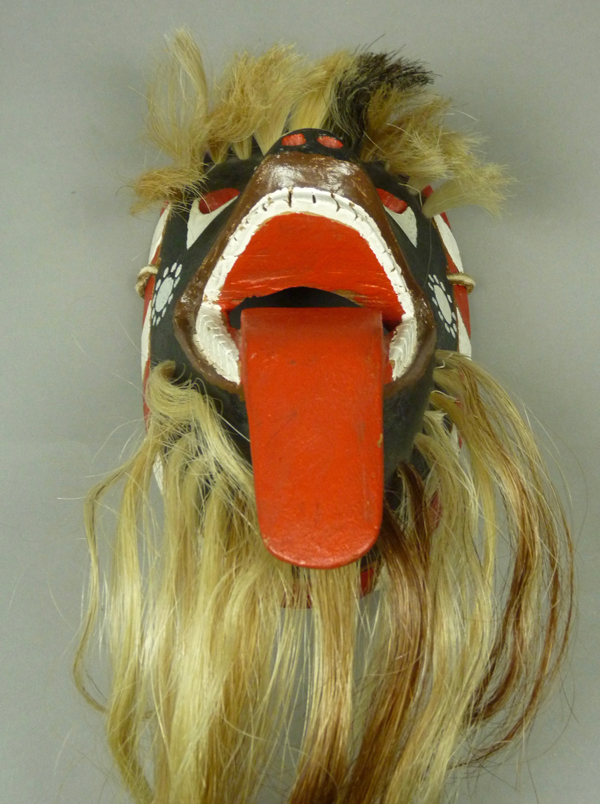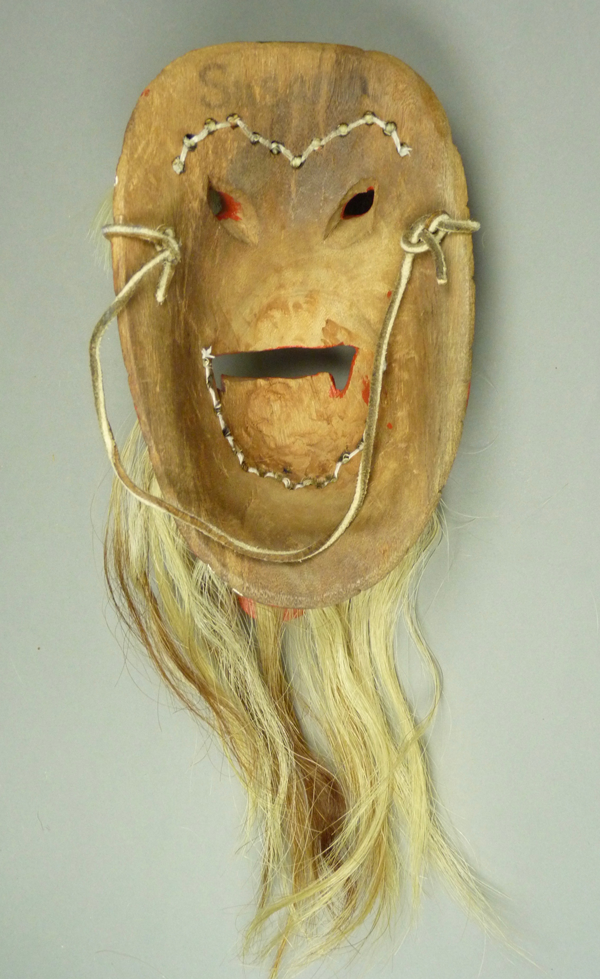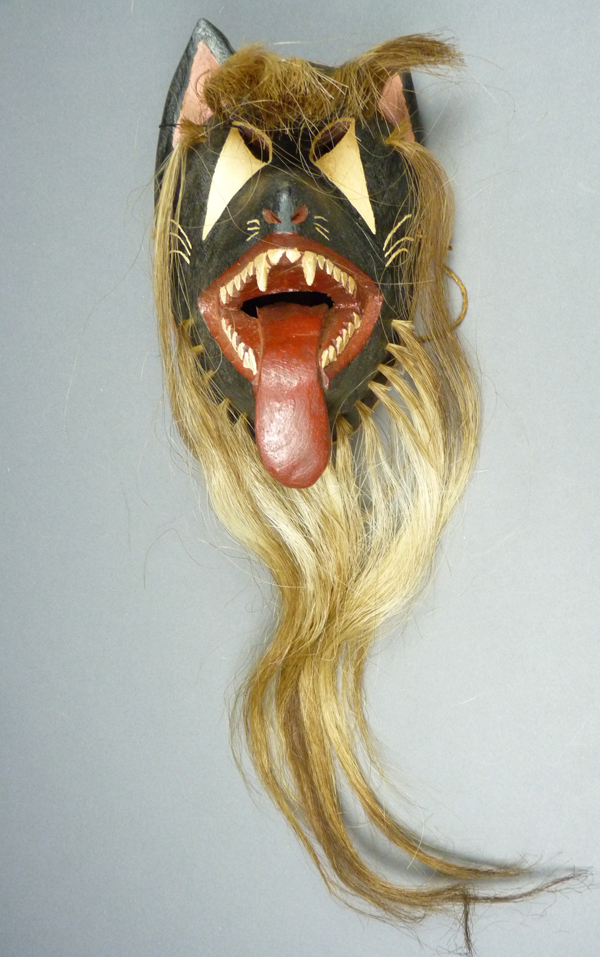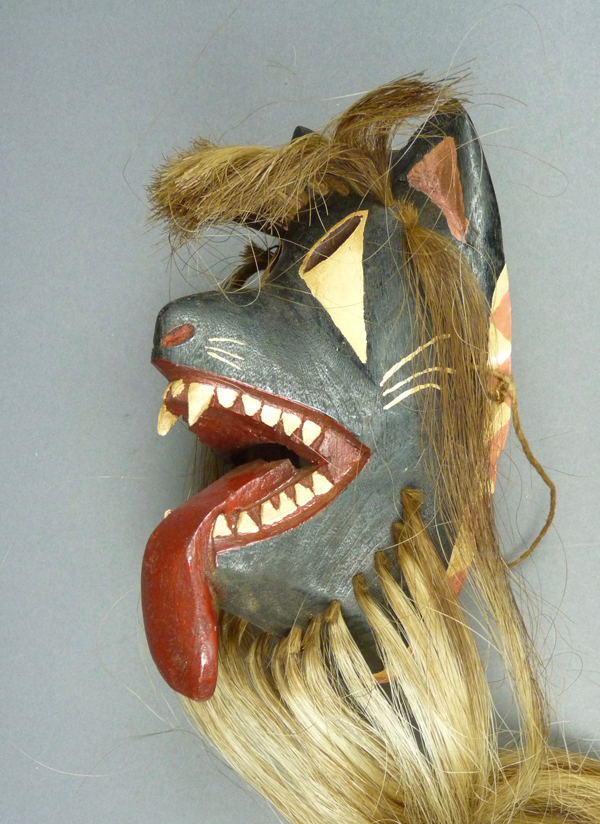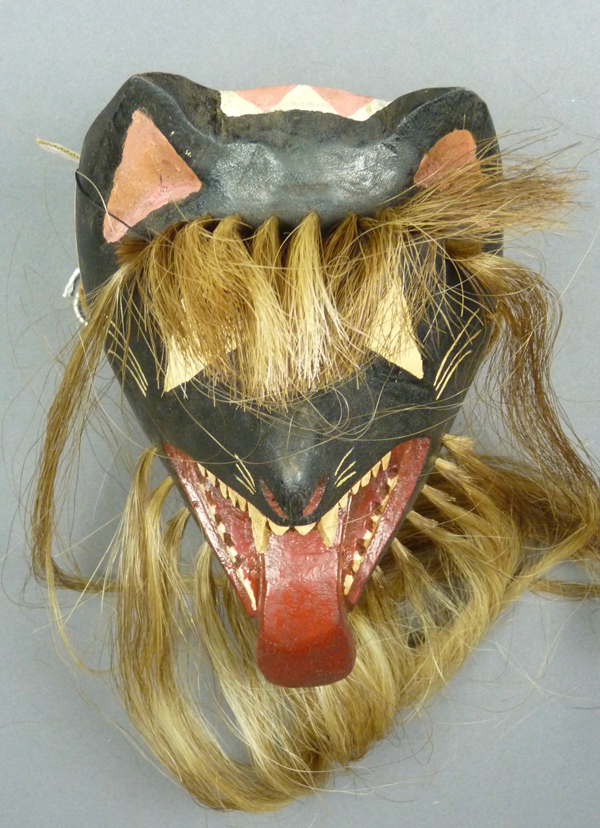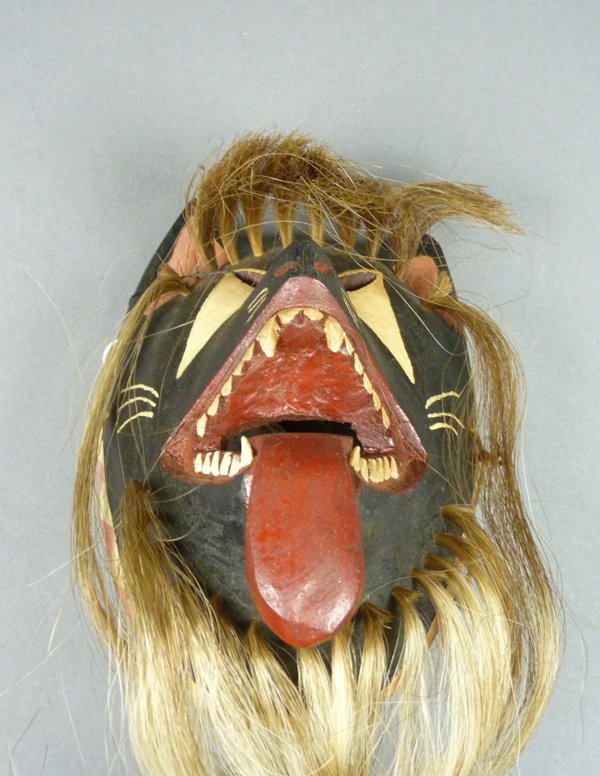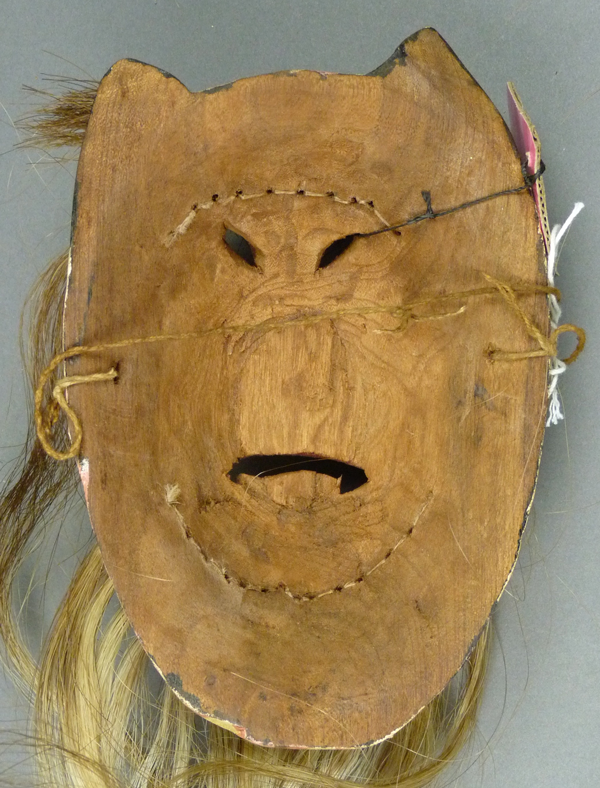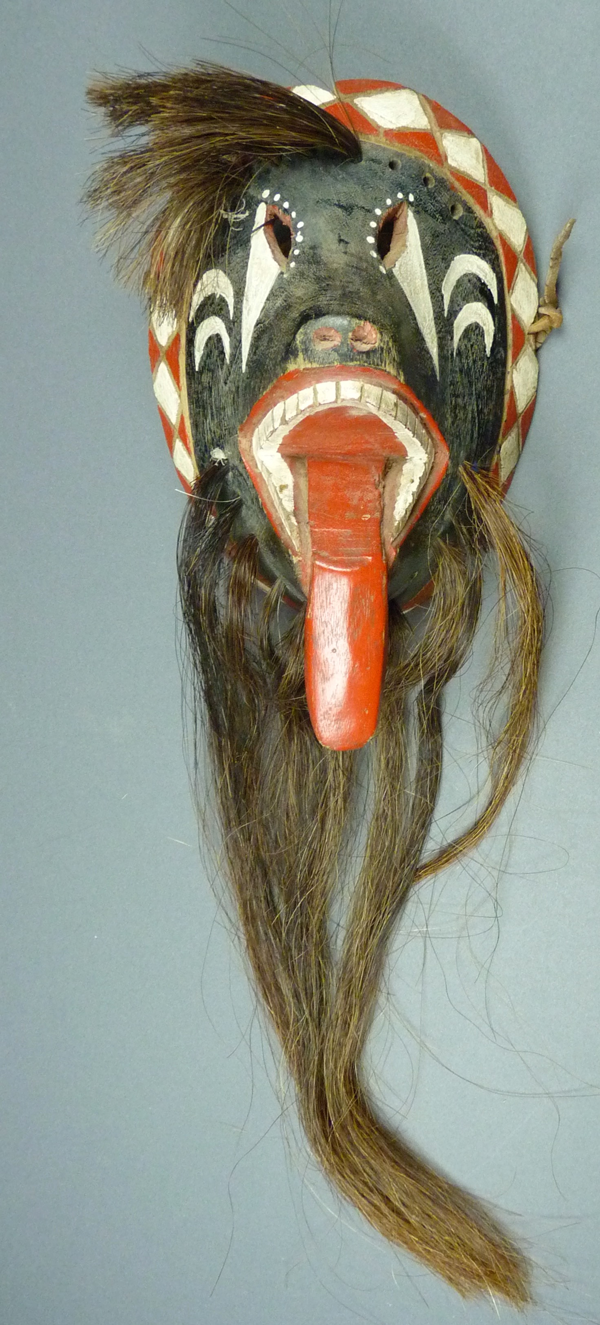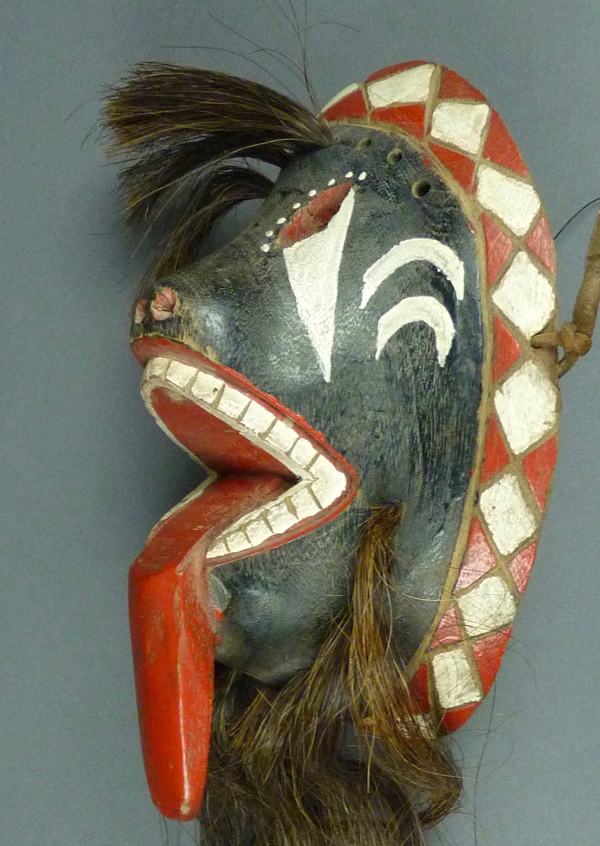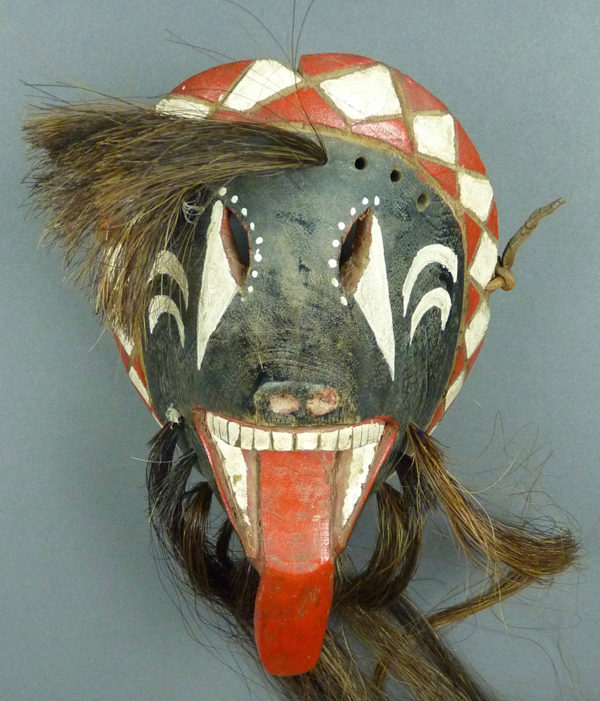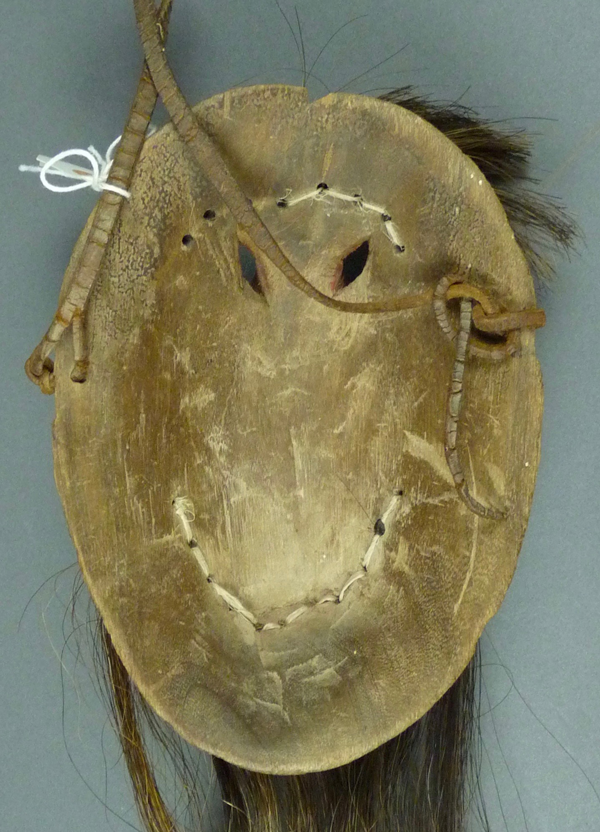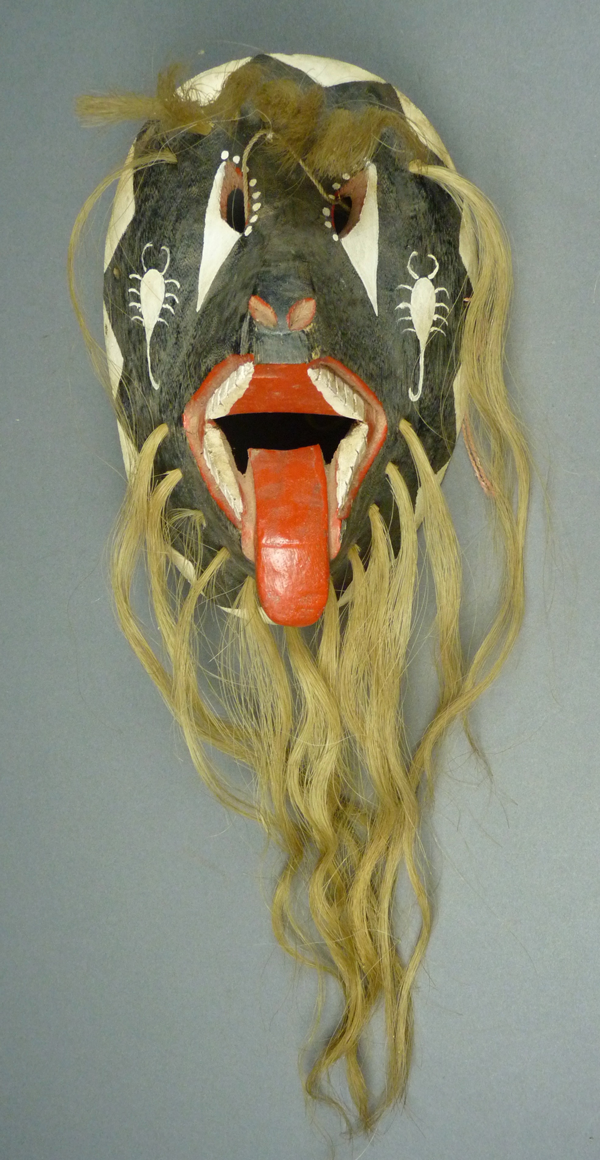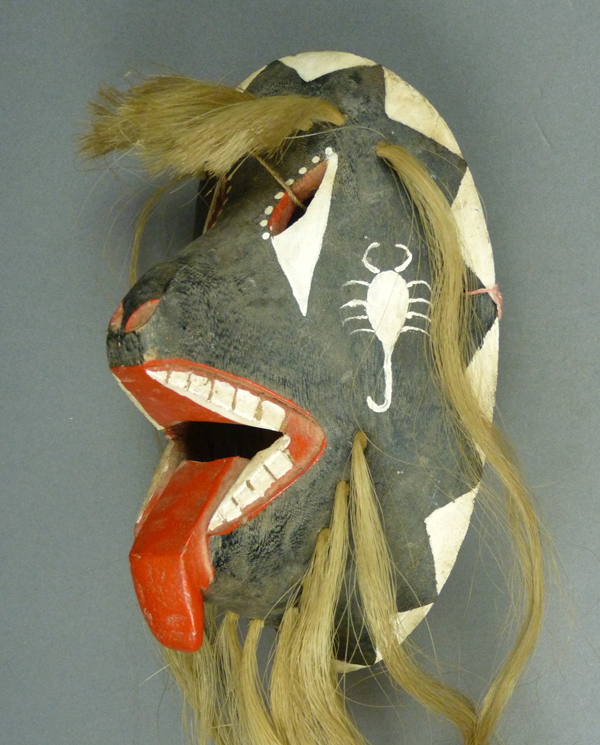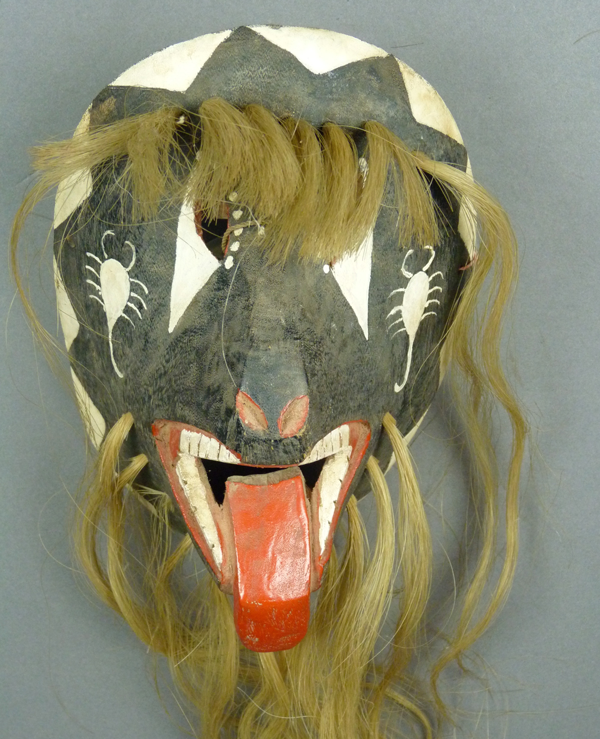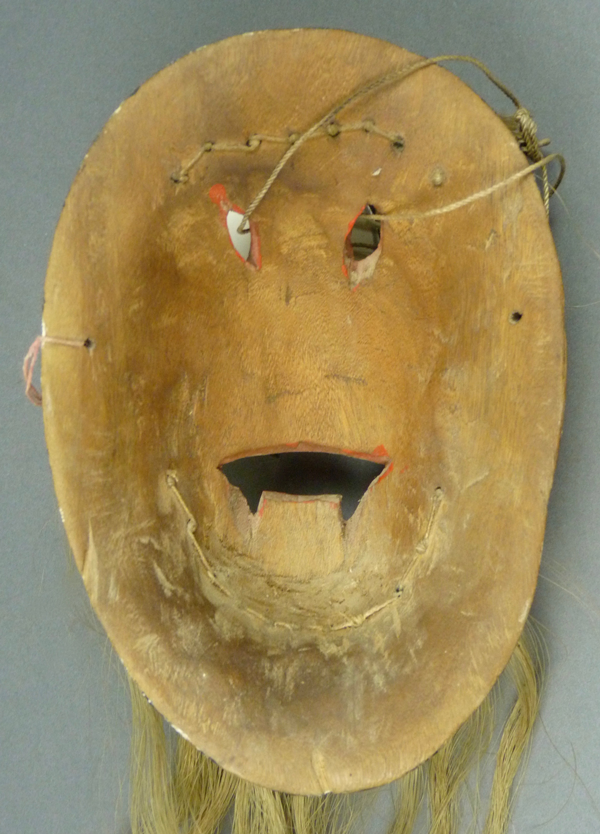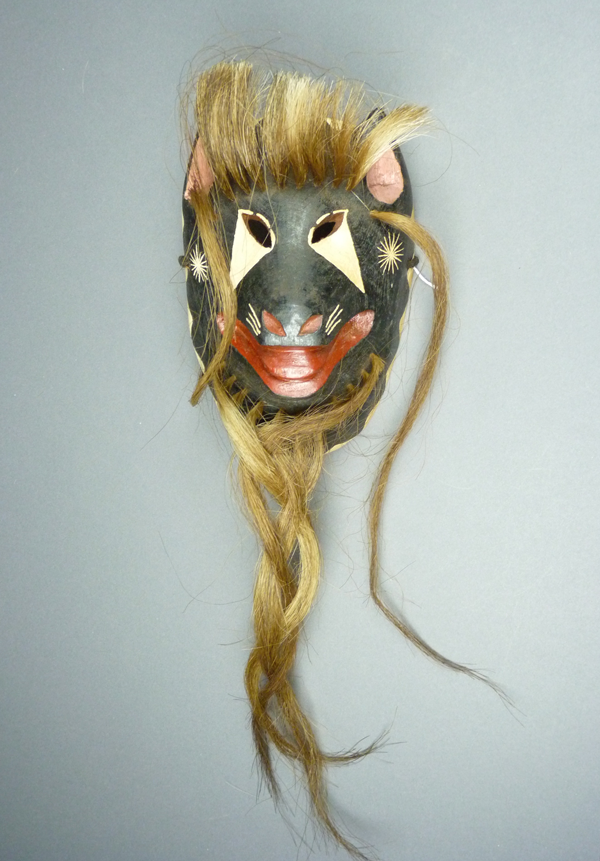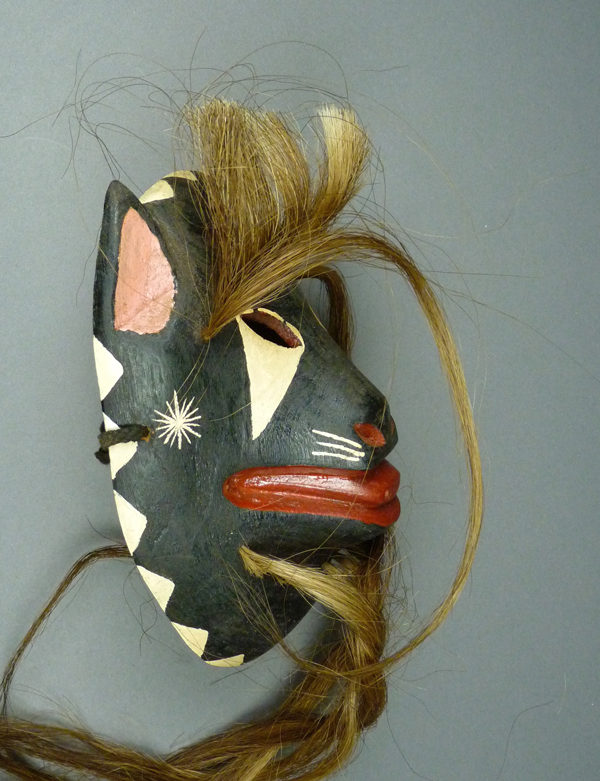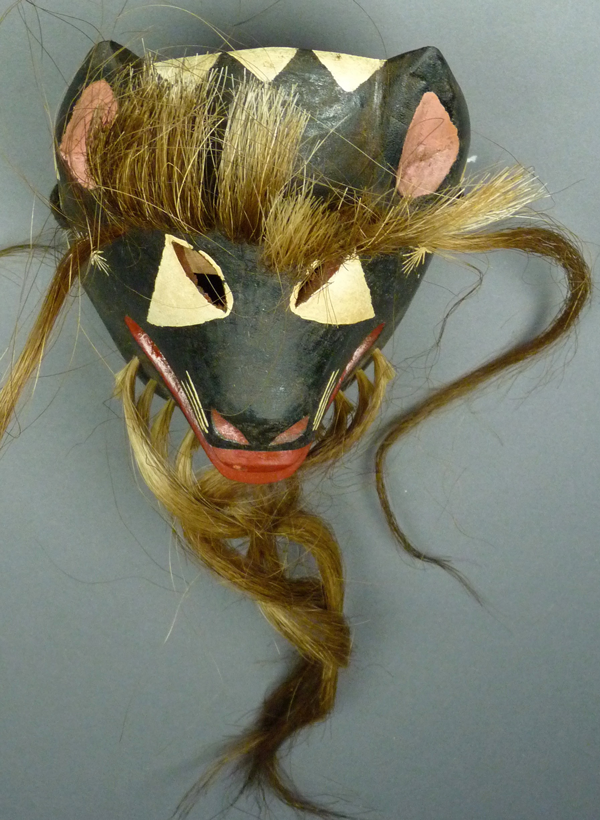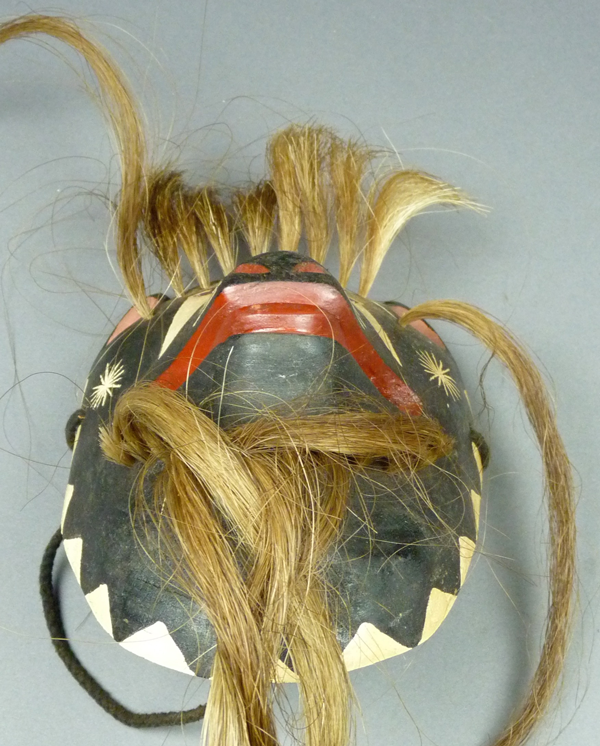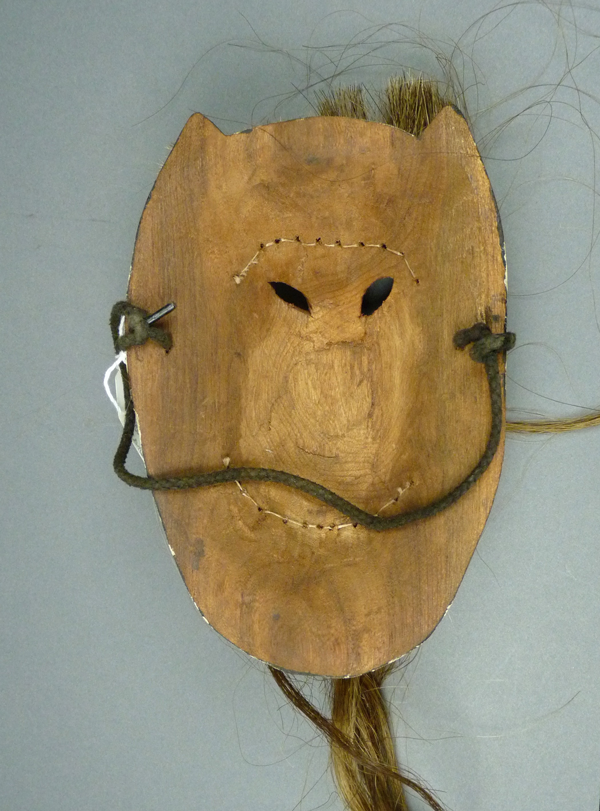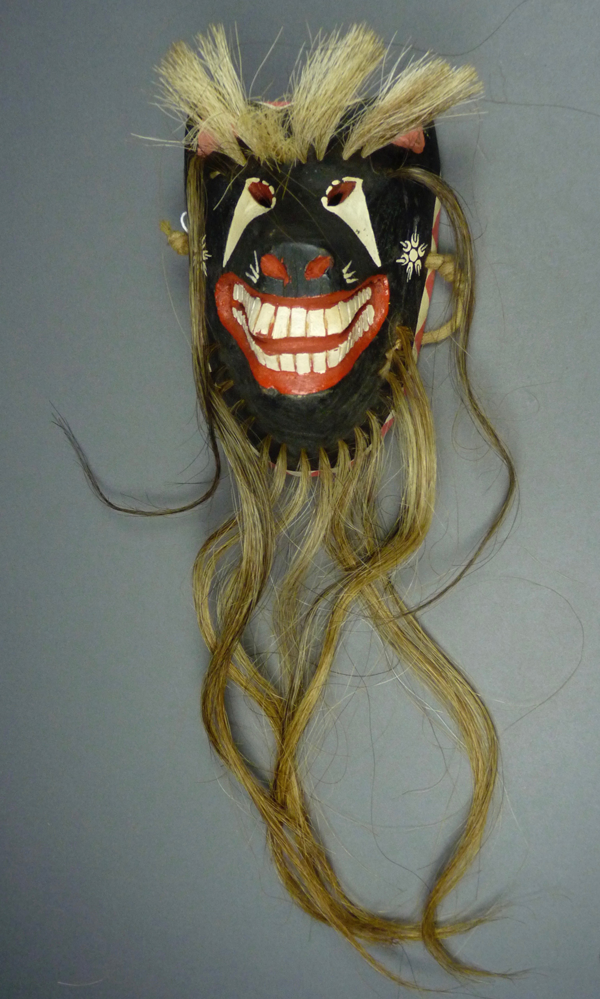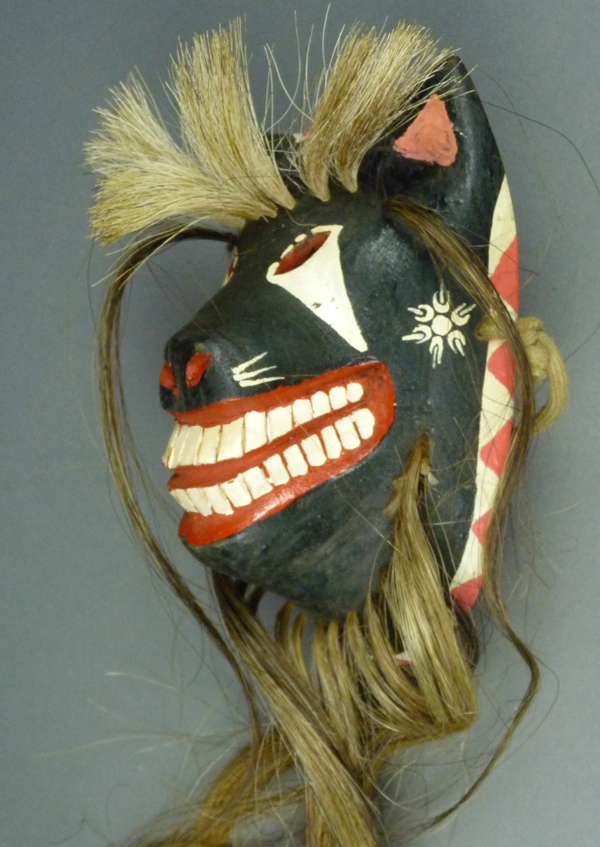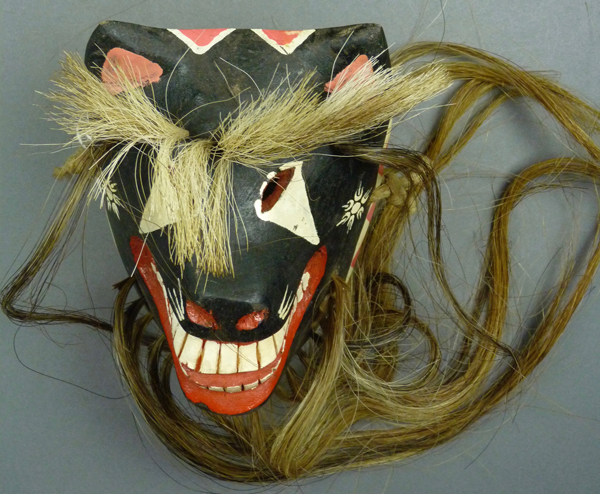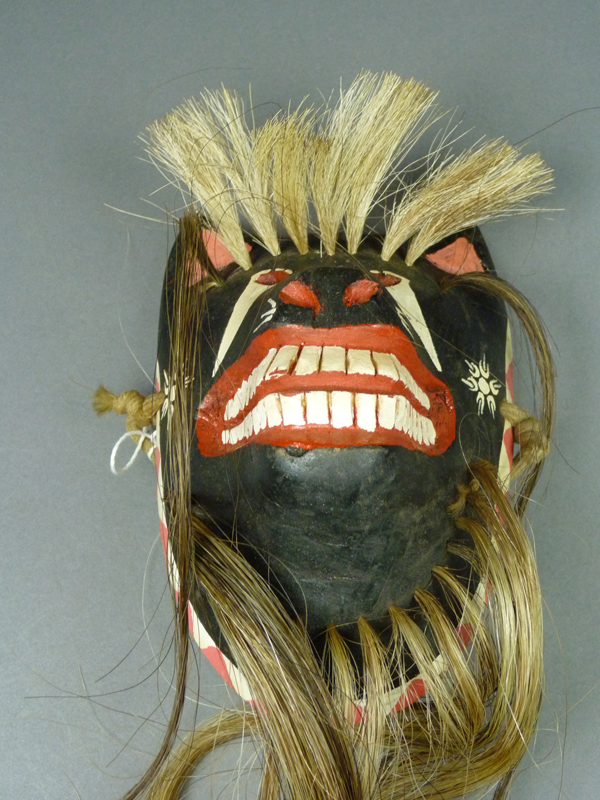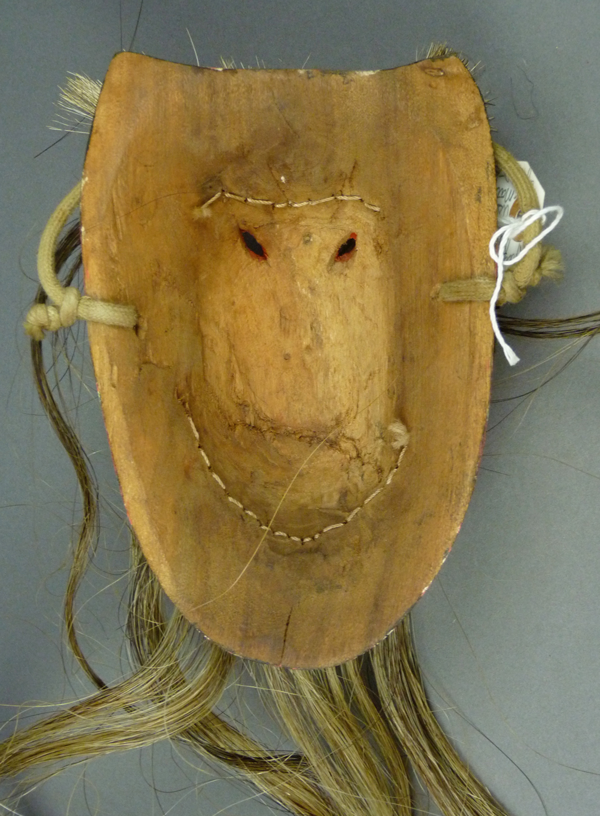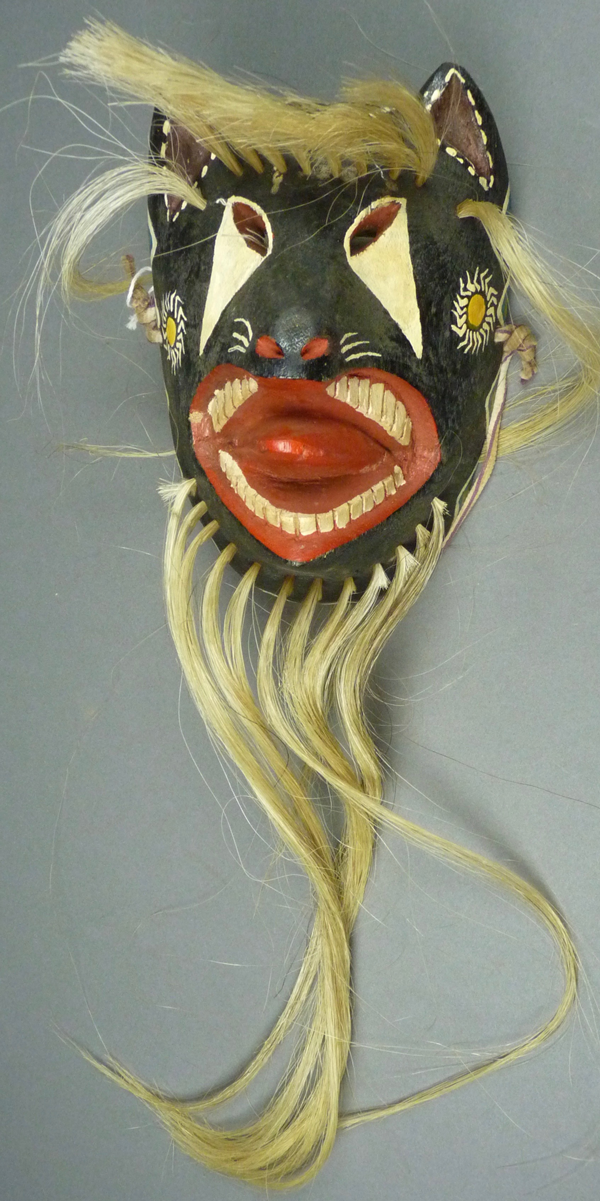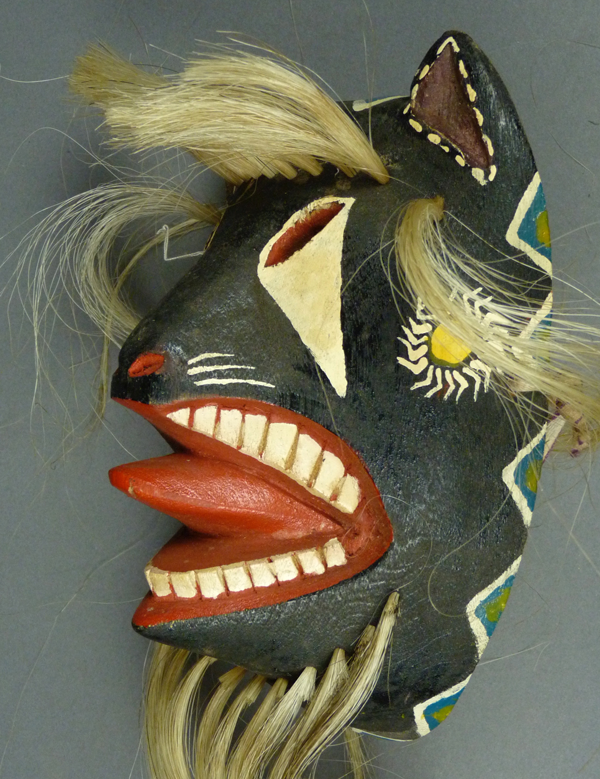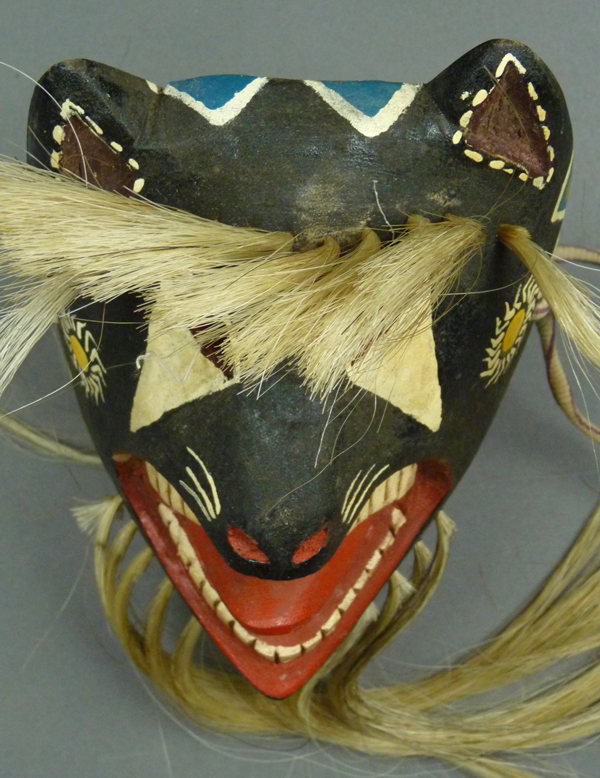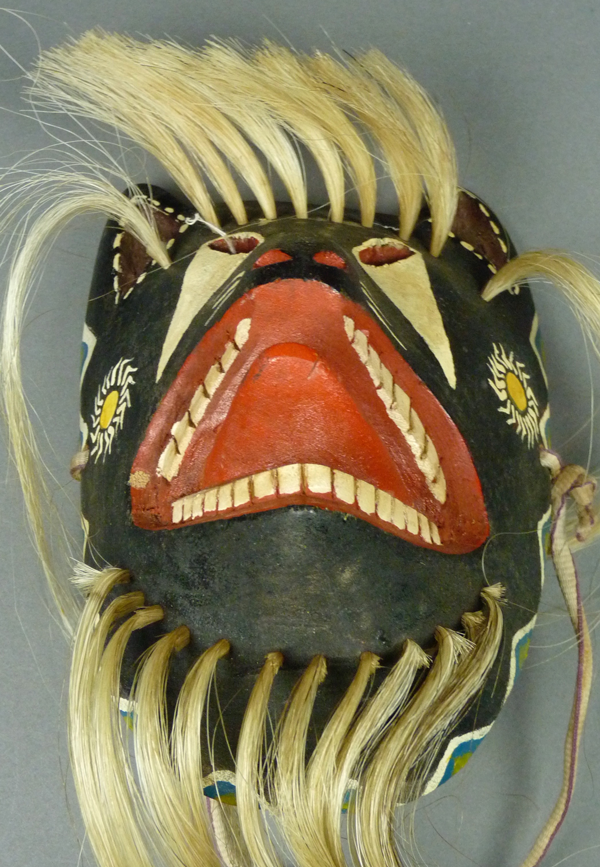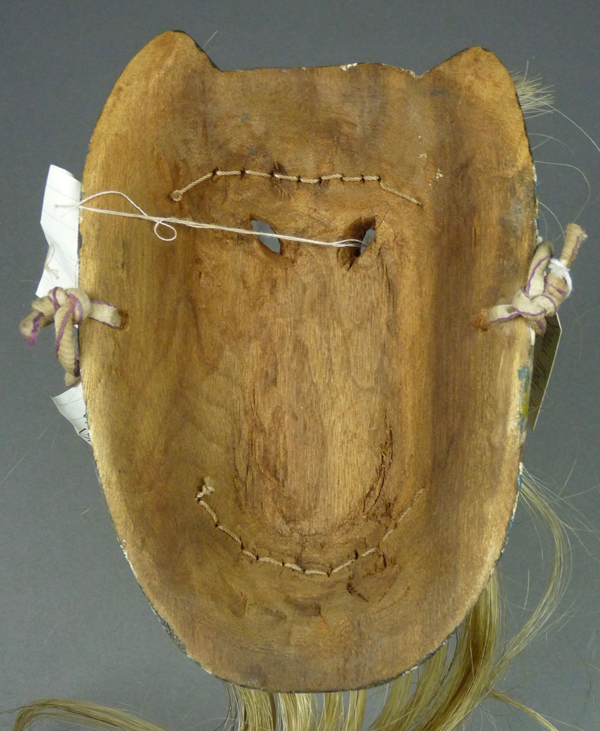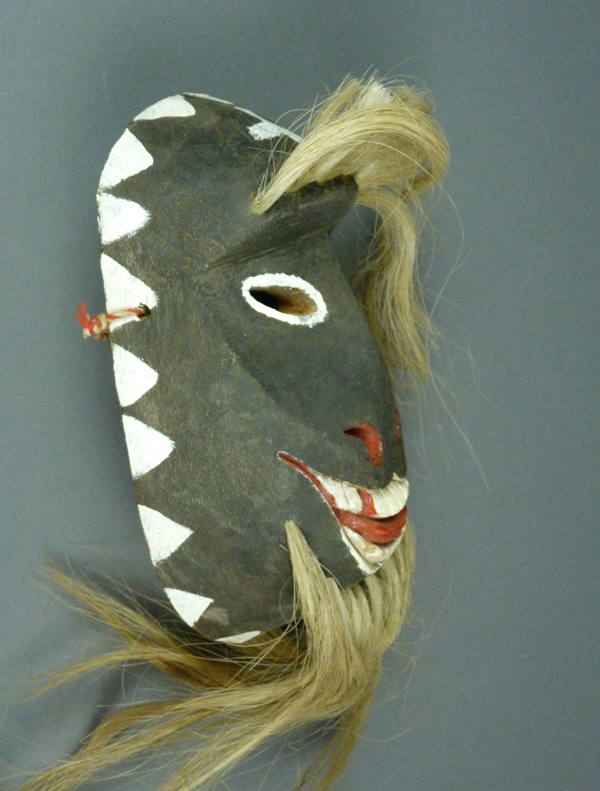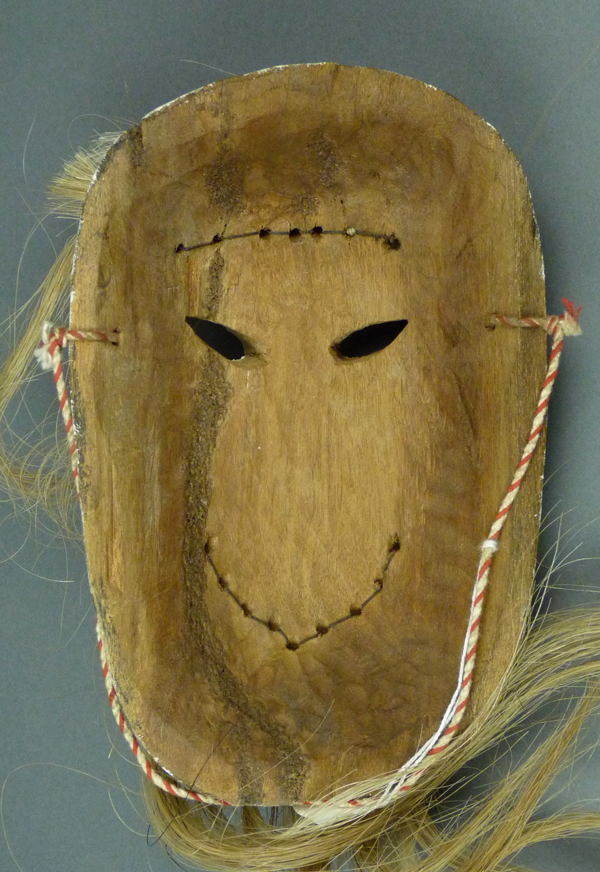Today I will show you a few animal masks by Hilario Álvarez Mendoza. The first is one that I purchased from the Old Pascua Community Center in Tucson, Arizona, in 2013. I was told that this mask had been worn by children from the Old Pascua community who were learning to dance. When you see the back, it will be clear that quite a lot of learning had taken place. This mask has the face of a dog.
Like the masks in last weeks post, this one certainly has features that might remind you of the masks of Antonio Bacasewa, Hilario’s step-father. The forehead cross and the freehand designs on the cheeks are both typical of Antonio’s style. Furthermore, the hair bundles are pegged. The extended tongue, on the other hand, has an abrupt angular bend while those of Antonio bend more softly.
From the side, the overall design of the mouth is certainly like those of Antonio Bacasewa, while the tongue bends sharply as it clears the mouth. Really it is a caricature of a tongue, one that is inanimate and cartoonish rather than one that is muscular and realistic.
The rim design is discontinuous.
The eyes are slanted, a detail that is more easily seen from the back.
The back of this mask has heavy staining around the rim, which is indicative of considerable use. There is a dancer’s name written across the back of the forehead—Susalia? This word, which has no meaning in the English language, is a brand name in Mexico, akin to General Foods™ or Pillsbury™. Obviously it appears on the mask as slang or a nickname.
The rest of the masks in this post were collected by Barney Burns and Mahina Drees Burns. All but one are Canine (Dog) masks, while the last is a goat. This one was said to have been carved by Federico Piña, however Tom Kolaz identified it as the work of either Antonio Bacasewa or Hilario Álvarez Mendoza. Of the two, I would pick Hilario. Barney and Mahina were told that it was danced by Luis Jaimes for 8 years. (B&M 176/174)
Like the first mask, this one has an extended tongue that hangs straight down from the lip; let’s call it a “vertical tongue.”
Note the slanted eyes. There is no forehead cross.
Looking at the hair bundles, I do not see any pegs on this mask.
Nor is there a chin cross.
This is a danced mask, with typical staining from use.
The third mask (B&M 104) was said to have been carved by “Ilario Bacasewa,” an obvious reference to Hilario Álvarez Mendoza. Hilario was obviously the carver, based on the observed design details. I am noticing, for example, the slanted eyes, and of course this vertical tongue is becoming very familiar.
This is an interesting and less common rim design.
Once again, this mask also lacks a forehead cross.
And there is no chin cross.
I don’t see any pegs.
The back of this mask demonstrates significant staining from use.
Apart from the scorpians on the cheeks, the fourth mask is very similar to the third (B&M 438). Barney and Mahina purchased this mask as the work of Hilario Álvarez Mendoza in 2003. It was said to have been danced for 18 years.
There are no crosses or pegs.
The eyes are slanted and the vertical tongue breaks sharply over the lower lip.
I like the scorpions.
This is another mask with heavy evidence of wear.
This next mask has a very short extended tongue (B&M 146). It was attributed to Hilario by Mahina Drees Burns, and by now you are already in a good position to agree.
The sun/flower designs on the cheeks are typical for this carver.
There is no forehead cross, but we see the usual slanted eyes.
I don’t see any pegs.
There is no chin cross.
The back has considerable staining from use.
The seventh mask in this series resembles the last, except that it has no visible tongue (B&M 479). It was collected by Barney and Mahina in 2008 after having been danced for five years.
Again we find interesting sun or flower designs on the cheeks, and slanted eyes.
The teeth are slightly separated.
I don’t see any pegs.
There is no chin cross.
Staining on the back of the rim indicates considerable use.
The eighth mask continues a number of familiar trends (B&M 294). When it was collected by Barney and Mahina in 2008, after 5 years of use, it was correctly identified as a mask by Hilario.
There is a short extended tongue. The eyes are slanted.
Unusual colors are found in the rim design.
There are no pegs.
The back is stained from use.
The last mask in today’s post has the face of a goat (B&M 109) Barney and Mahina were told that this mask was carved by “Ilario de Vicam.” It had been danced for 13 years. As noted earlier, this carver actually lives in the community of “Vicam Switch.”
This is such a playful face,
This goat mask has a line down the cheek, but this is a little different than those on the human faced masks, while the canine masks lack this feature. Look at the elaborate line of the mouth.
There is plenty of evidence for wear on the back of this mask.
I hope that you have enjoyed seeing the masks of Hilario Álvarez Mendoza. Next week I will review Pascola masks by Cirilio Rodríguez Amarillas.

